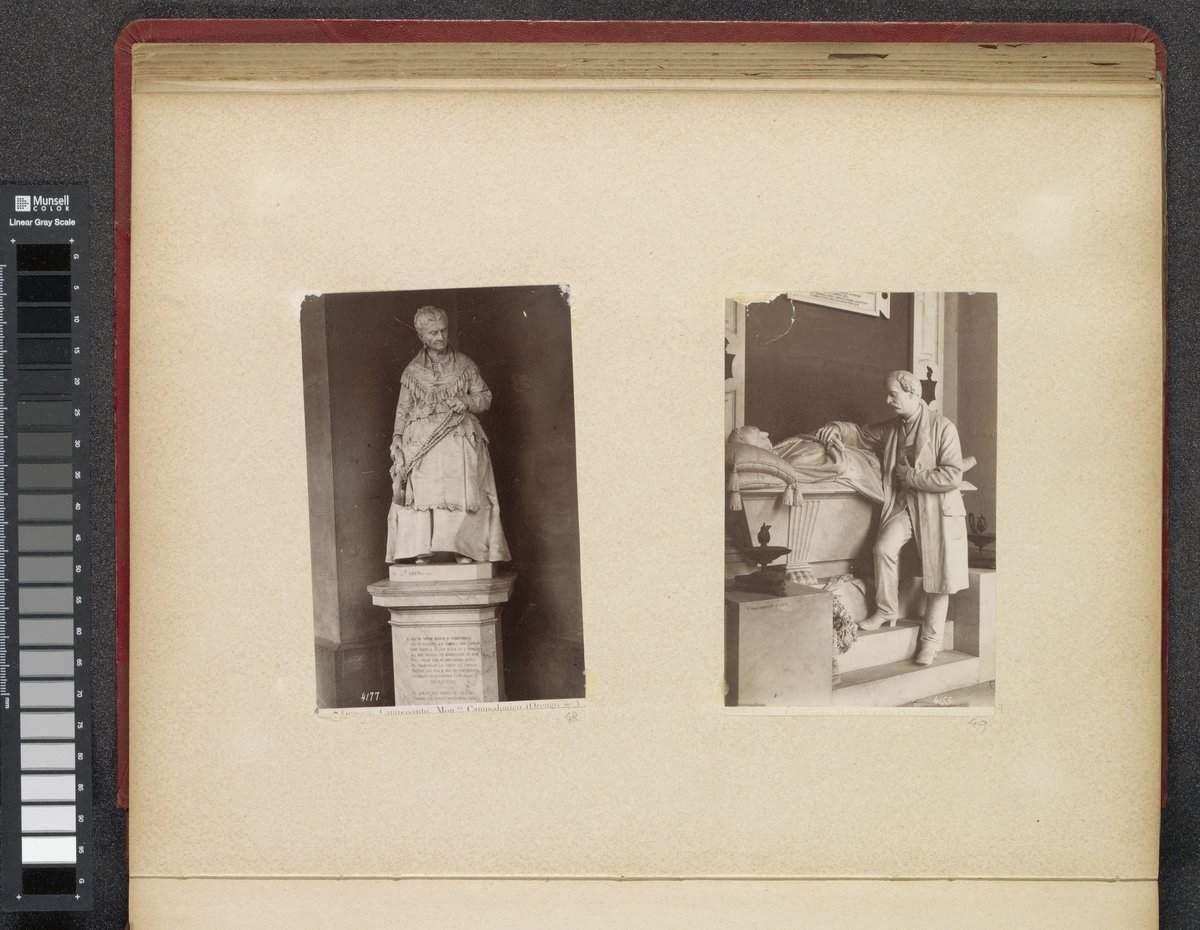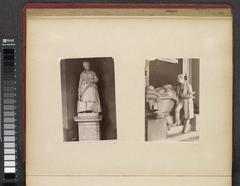
Tomba Da Costa Visiting Hours, Tickets, and Genoa Historical Sites Guide
Date: 14/06/2025
Introduction to Tomba Da Costa in Genoa
Located in the Monumental Cemetery of Staglieno, one of Europe’s most significant cemeteries, the Tomba Da Costa is a masterwork of 19th-century funerary art and a window into Genoa’s evolving cultural landscape. This distinctive monument, sculpted by S. Saccomanno in 1877, encapsulates the personal grief and societal values of the time, offering visitors an immersive experience in Genoa’s artistic and historical heritage. As you plan your visit, this guide provides a comprehensive overview of the Tomba Da Costa, including historical context, artistic significance, practical visitor information, and related Genoa historical sites.
Table of Contents
- Introduction
- Genoa’s Historical Context
- Monumental Cemetery of Staglieno
- The Tomba Da Costa
- Visitor Information
- Suggested Itineraries & Nearby Attractions
- Cultural and Social Significance
- Visuals and Interactive Resources
- FAQ
- Conclusion
Genoa’s Historical Context
Ancient Origins and Maritime Power
Genoa, often called “La Superba” (“The Proud”), boasts roots dating back to the 5th millennium BCE. Its strategic location on the Ligurian Sea established it early on as a vital Mediterranean trading hub, flourishing under Roman rule and later emerging as a powerful maritime republic. Rivaling Venice and Pisa, Genoa’s mercantile reach spanned from the Black Sea to North Africa, fostering influential banking and insurance institutions. The city’s legacy as the birthplace of Christopher Columbus further cements its global historical relevance (World History Journal).
The Risorgimento and Modern Transformation
Genoa played a pivotal role in the Italian unification movement, known as the Risorgimento. Notable figures such as Giuseppe Mazzini and Giuseppe Garibaldi hailed from Genoa, and the city was central to the Expedition of the Thousand, a defining moment in Italy’s path to nationhood. Rapid industrialization in the late 19th century transformed Genoa into a center for shipbuilding and manufacturing, a legacy that continues alongside its preserved medieval core, now a UNESCO World Heritage site (Discover Genoa).
Monumental Cemetery of Staglieno
History and Architecture
Founded in 1851, the Monumental Cemetery of Staglieno responded to public health reforms that banned burials within city limits. Designed by Carlo Barabino and completed by Giovanni Battista Resasco, Staglieno features terraced gardens, grand porticoes, and a central Pantheon, blending Italian and northern European influences (Ancient Origins). Its open-air museum aesthetic has inspired cemeteries across Europe (Discover Genoa).
Art and Cultural Significance
Spanning over one square kilometer, Staglieno houses more than 115,000 graves and an extraordinary range of funerary sculptures, from Neoclassical to Art Nouveau. Its multi-faith sections reflect Genoa’s cosmopolitan heritage, while notable visitors like Mark Twain and Friedrich Nietzsche praised its solemn beauty (Staglieno Official Site; Where’s Ben Been).
The Tomba Da Costa
Historical Background
Commissioned by Giovanni Battista Noli Da Costa, the Tomba Da Costa commemorates Faustino Antonio Da Costa, a nobleman of Portuguese descent. The tomb was created in 1877 by S. Saccomanno, at a time when funerary art in Genoa was transitioning from idealized Neoclassicism to the more personal and realistic expressions of the late 19th century (ar-tour.com; visitgenoa.it).
Artistic Style and Symbolism
The Da Costa monument is celebrated for its intense realism and emotional intimacy. Saccomanno’s sculpture diverges from allegorical norms, depicting a deeply personal scene: a son’s final farewell to his father. Detailed elements, such as the father’s dressing gown and slippers, anchor the scene in everyday reality and evoke empathy in the viewer. The monument is emblematic of Bourgeois Realism, emphasizing private grief and authentic human experience (visitgenoa.it, p. 5-6).
Sculptor S. Saccomanno
Though little is known outside Staglieno about S. Saccomanno, his craftsmanship and nuanced emotional expression in the Da Costa monument place him among the notable sculptors of 19th-century Italian art (ar-tour.com).
Visitor Information
Location and Access
The Tomba Da Costa is situated within the Monumental Cemetery of Staglieno, east of Genoa’s historic center. Easily reachable via public transport—bus 34 from Piazza Corvetto takes about 10 minutes—the cemetery is also accessible by taxi (Where’s Ben Been; Lonely Planet).
Visiting Hours and Ticketing
- Opening Hours: Generally open daily from 8:00 AM to 5:30 PM (seasonal variations possible). Always check the official Genoa tourism website for the latest information.
- Tickets: Admission is typically free. Guided tours, which offer deeper insights, are available for a modest fee (around €5 for adults, with discounts for children, students, and seniors).
- Guided Tours: City-organized guided tours (about 90 minutes) are highly recommended, covering the Pantheon, Statue of Faith, and notable tombs including the Da Costa monument (Staglieno Official Site).
Accessibility and Visitor Tips
- The cemetery’s terrain includes terraced paths and steps; comfortable footwear is essential.
- Accessible routes are available for visitors with mobility concerns—ask at the entrance.
- Maps and an interactive geoportal help locate specific monuments.
- Facilities: Restrooms and a café are near the main entrance.
- Photography is allowed but should be respectful as Staglieno is an active cemetery.
Events and Photography
Occasional art exhibitions, special tours, and night-time visits provide unique ways to experience the site. Photographers will find the Da Costa monument particularly appealing in early morning or late afternoon light.
Suggested Itinerary & Nearby Attractions
- Begin at the main entrance, where you can pick up a map or self-guided booklet.
- Visit the Da Costa monument via the Historic-Artistic Route.
- Explore other notable tombs (Botto, Tagliaferri, Amerigo) to appreciate the evolution of funerary art.
- Allocate 2–3 hours for a meaningful visit.
- Nearby, enjoy the historic Via Garibaldi, Palazzo Reale, and Genoa Cathedral (Explore Via Garibaldi).
Cultural and Social Significance
Genoese Bourgeoisie and Funerary Art
Elaborate tombs in Staglieno, including the Da Costa monument, reflect the aspirations of the 19th-century Genoese bourgeoisie. They valued the commemoration of family, individual legacy, and the artistry of memorial sculpture (visitgenoa.it, p. 11).
Community Engagement and Educational Impact
Schools and universities frequently visit Staglieno, using the Da Costa tomb as a focal point in educational programs about art, history, and civic values (Visit Genoa). Local institutions support ongoing preservation and public appreciation.
Visuals and Interactive Resources
For an enriched experience, consult:
- The Staglieno official gallery for high-resolution images.
- A cemetery map highlighting the Da Costa monument.
- Virtual tours and multimedia guides available through the Genoa tourism website.
Frequently Asked Questions (FAQ)
Q: What are the Staglieno Cemetery visiting hours?
A: Open daily, typically from 8:00 AM to 5:30 PM. Check for seasonal updates.
Q: Is there an admission fee?
A: Admission is free; guided tours cost around €5.
Q: Are guided tours available?
A: Yes, regular guided tours cover major monuments including the Tomba Da Costa.
Q: Is Staglieno Cemetery accessible for people with disabilities?
A: Some areas are steep, but accessible routes are available; inquire at the entrance.
Q: Can I take photos?
A: Yes, but please be respectful.
Q: Are special events held at the cemetery?
A: Occasionally, including exhibitions and themed tours. Check the official website for updates.
Conclusion
The Tomba Da Costa is a must-see for anyone interested in Genoa’s artistic, historical, and cultural heritage. Its unique blend of emotional realism, technical mastery, and civic symbolism offers a compelling narrative about Genoa’s past and present. With accessible visiting hours, affordable or free entry, and enriching guided tours, the Da Costa monument and the wider Staglieno Cemetery promise a rewarding experience for art lovers, historians, and travelers alike.
Download the Audiala app for curated audio tours and updates, and follow our social media channels for more insights into Genoa’s living history.
References and Further Reading
- The History of Genoa from Ancient Times to Modern Day, 2024, World History Journal
- Dramatic and Intensely Moving Monumental Cemetery of Staglieno, 2024, Ancient Origins
- Monumental Cemetery of Staglieno Official Guide, 2024, Visit Genoa
- Tomba Da Costa Guide, 2024, AR Tour
- Discover Genoa Cemetery, 2024, Discover Genoa
- First-Time Guide to Genoa, 2024, Lonely Planet
- Ultimate Travel Guide to Genoa, 2024, Travelling King
- Things to Do in Genoa, 2024, Discover Northern Italy
- Visit Genoa History and Traditions, 2024, Visit Genoa



































































































